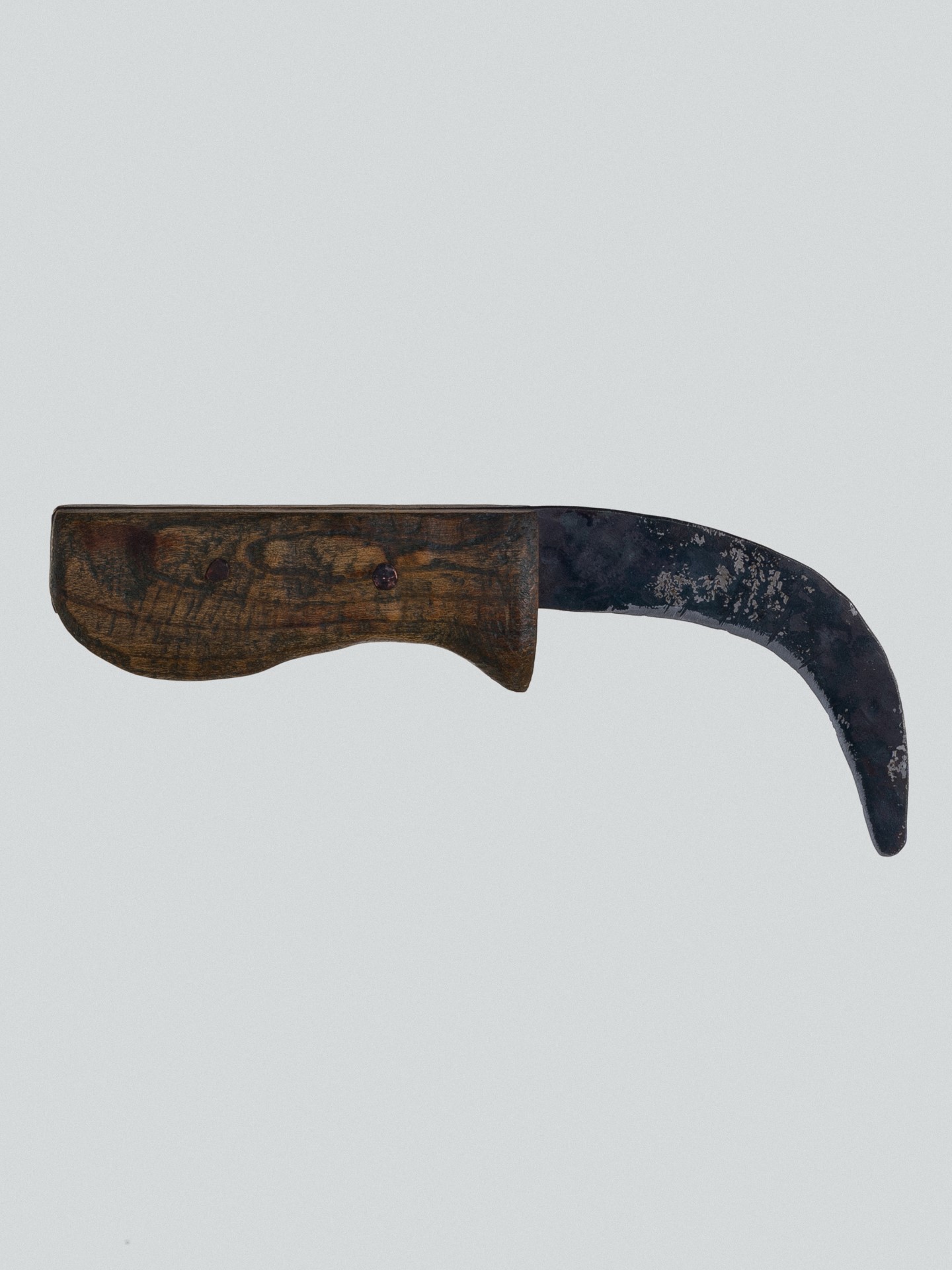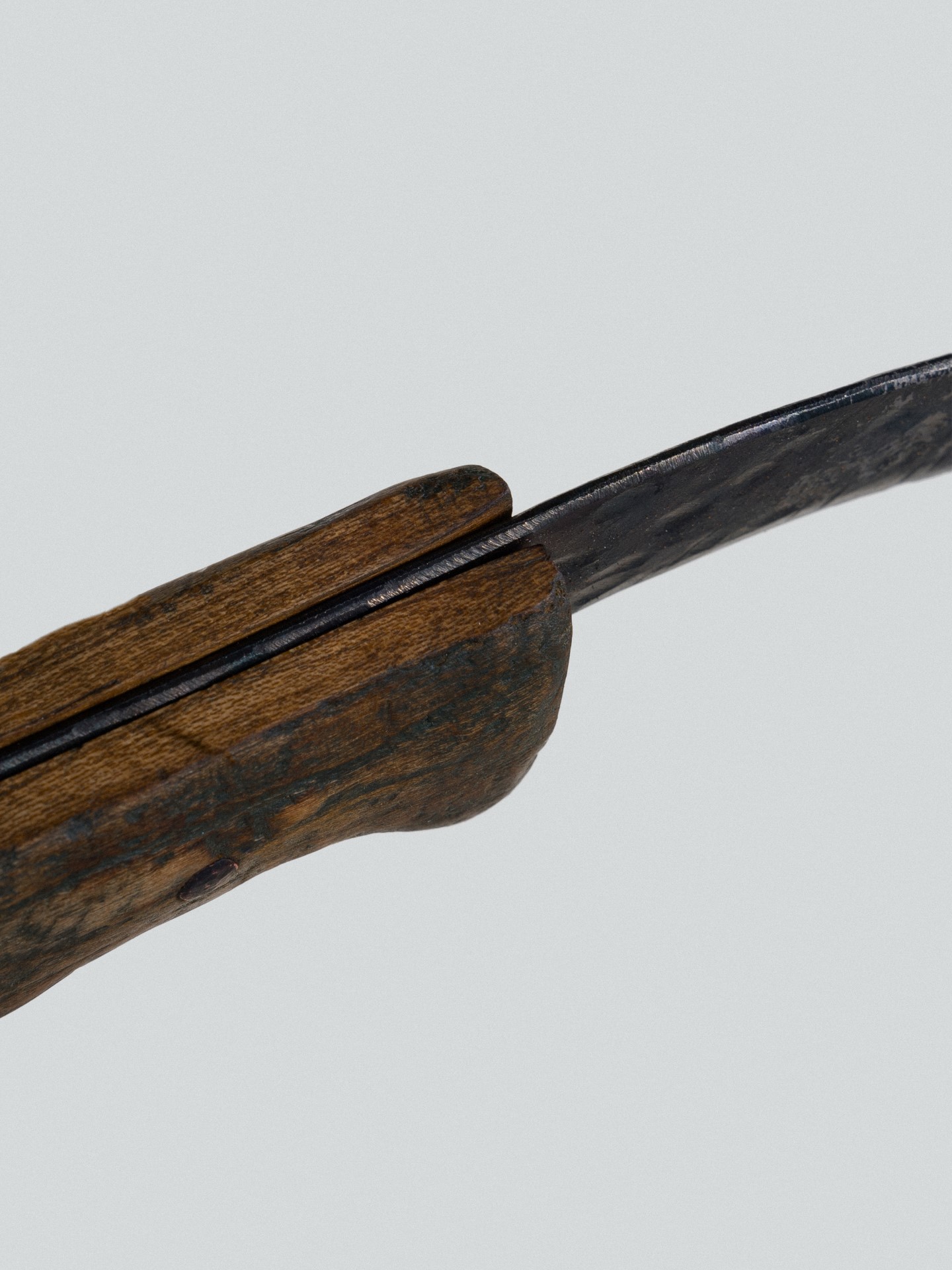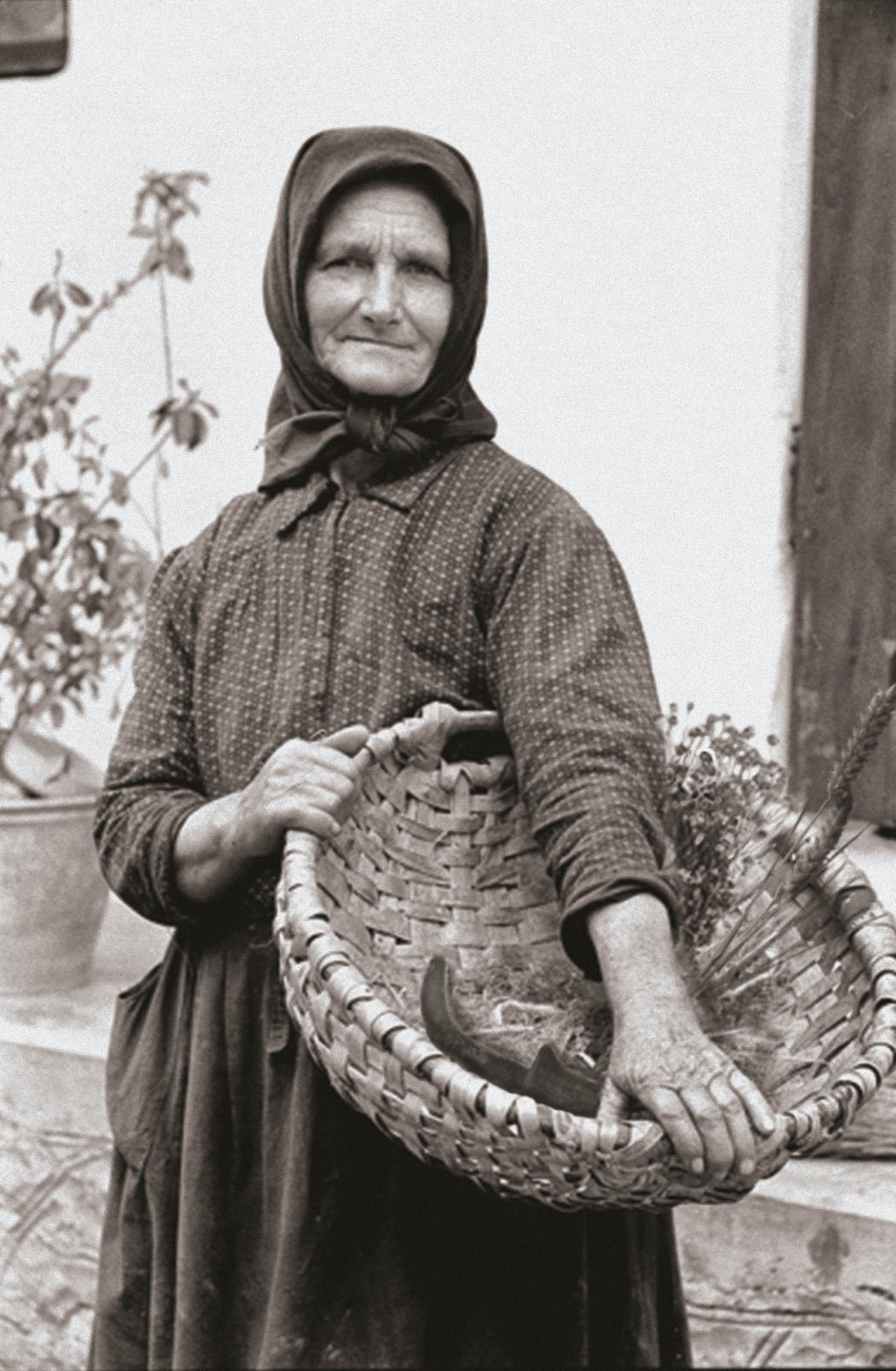The chidder-puller is a hand sickle-like tool common among Transylvanian healers, herbalists, and anointing people, which was used for harvesting, collecting, and processing medicinal herbs. Its name comes from the Moldavian Csángós in Romania, a fusion of the words “csuda” (miracle) and “dudó” (plant). The formation of its name can be explained by the interweaving of faith and healing. In Sándor Novobáczky's documentary “The Healing Tradition”, we can discover several sayings referring to this:
“We know that the sanctified [herb] is even more effective.” (Viktóra Görgi)
“I always collect sea buckthorn on Calvary Hill. I remember my grandmother saying that the branches with five twigs can only be collected if you put pus and salt on its thorn and pray over it.” (Dr. Tinka Nyisztor, Moldova)
At the end of the 18th century, as a result of the emigration from the region of Moldavia (hoping for greater security and more advanced civilization) the term, which was still used at that time as a “chidder-puller”, spread around Székelyföld and Kalotaszeg. Ethnographers explain the change in the name of the object with the local dialect and the use of closed “e” and long “e/é” sounds.
A cséderhúzó az erdélyi gyógyítóasszonyok, füvesasszonyok és kenőemberek körében elterjedt kézisarlószerű szerszám, amit a gyógyfüvek betakarításához, összeszedéséhez és feldolgozásához használtak. Elnevezése a moldvai csángóktól ered, a dudó (növény) és csuda (csoda) szó egybeolvadásából. Nevének kialakulását a hit és gyógyítás összefonódásával magyarázhatjuk. Novobáczky Sándor Gyógyító hagyomány című dokumentumfilmjében több erre utaló mondást is felfedezhetünk:
„Tudjuk, hogy a megszentelt még hatásosabb.” (Görgi Viktóra)
„Én, ahonnan gyűjtöm a homoktövist, az a Kálvária hegyen van. Úgy mentem a homoktövist gyűjteni, hogy mindig elmondom a kereszt útját, mert ott vannak a keresztek előttem. És persze ilyenkor visszaemlékszem, hogy nagyanyám mindig mondta, hogy az ötujjú burjánt csak akkor lehet összegyűjteni, ha vittek a tövire puliszkát és sót, és imádkoztak rá.” (dr. Nyisztor Tinka, Moldva)
A 18. század végén a Moldva térségéből való fanarióta uralom ellen menekülő, nagyobb biztonságot és fejlettebb civilizációt remélő visszavándorlás következményeként terjedt el Székelyföld és Kalotaszeg környékén az akkor még csuderhúzóként használt kifejezés. A helyi dialektussal, a zárt e és hosszú e/é hangok használatával magyarázzák néprajzkutatók a tárgy elnevezésének megváltozását.


